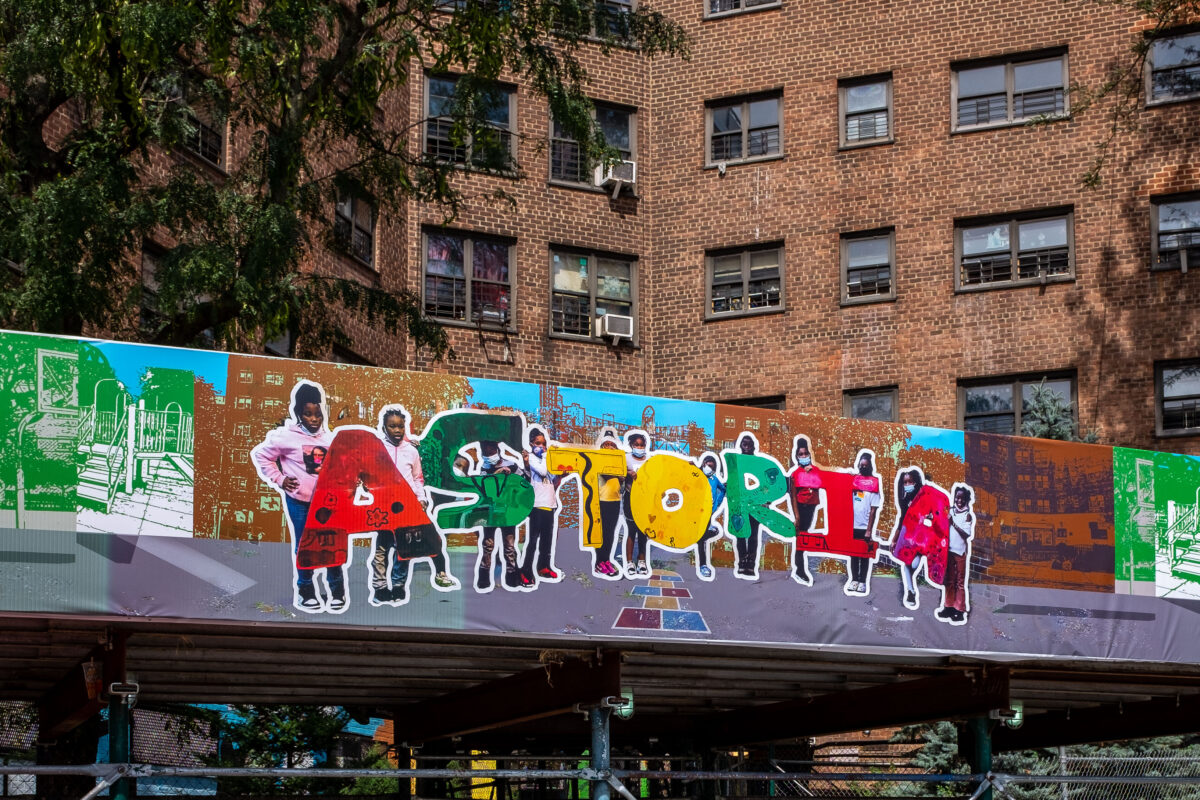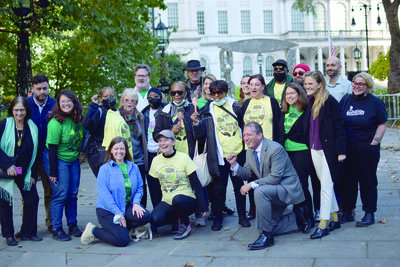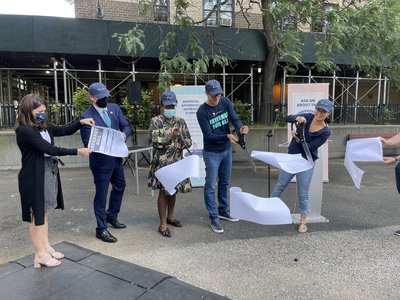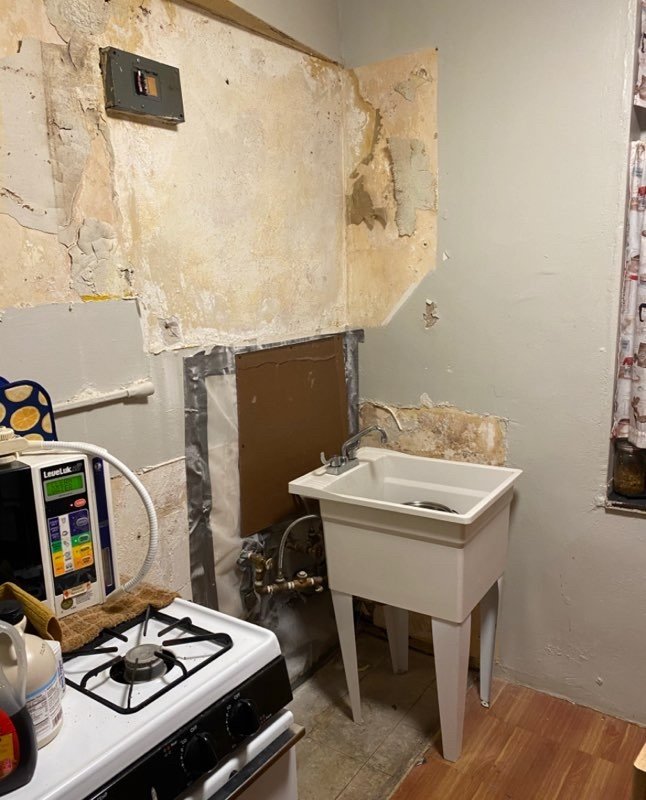Artists Use NYCHA Scaffolding as Canvas
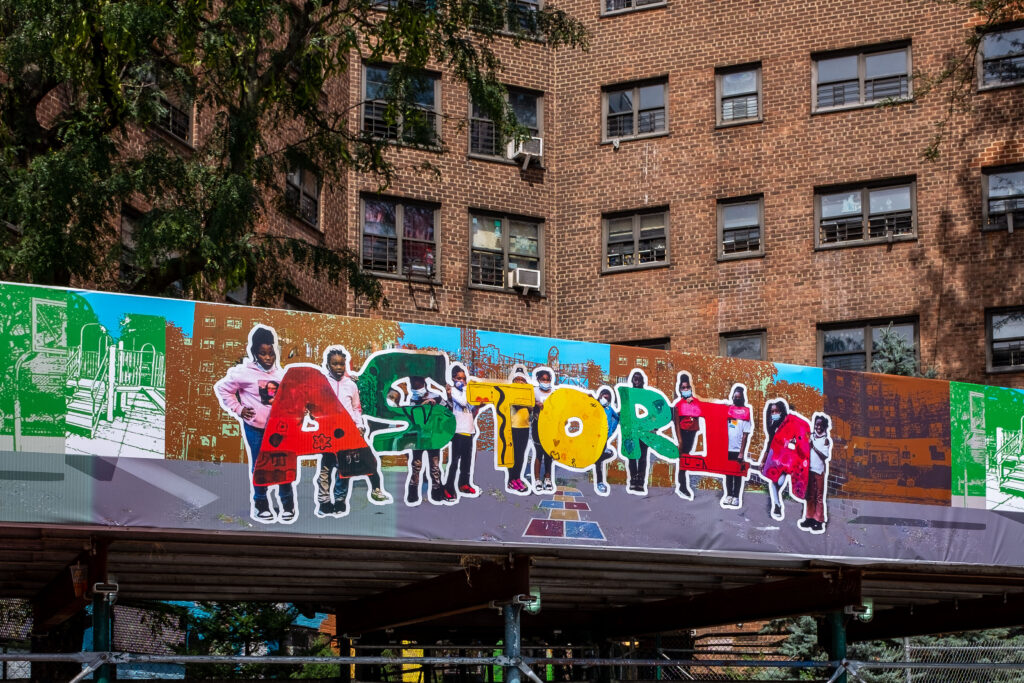
Tipu Alam, The Astoria Project, located at 4-03 Astoria Boulevard, Astoria Houses, Queens. Photo by Paul Katcher.
By Iryna Shkurhan | ishkurhan@queensledger.com
A city-wide art program that gave artists the opportunity to transform scaffolding at public housing sites into community-specific murals came to an end last week.
ArtBridge’s City Artists Corps: Bridging the Divide program was started ten months ago in partnership with the NYC Department of Cultural Affairs (DCLA) and the New York City Housing Authority (NYCHA) as the city recovered from the height of the pandemic. Selected artists had a paid opportunity to create an outdoor public facing installation while also engaging and cultivating inspiration from community members in the process.
Since 2009, the ArtBridge program has given artists across the five boroughs an opportunity to install large street-level art installations in unutilized construction fencing. According to their website, artists have installed 60,000 square feet of street art since.
The completion of the Bridging the Divide program was celebrated on April 19 at Manhattan’s Taft Houses. The event honored the artistic contribution of 59 artists to NYCHA sites across the city, as well as the stories and of the public housing residents that were represented in the art.
“Bridging the Divide shows what’s possible when our artists and residents are empowered to collaborate and create toward a shared vision,” said Cultural Affairs Commissioner, Laurie Cumbo, who attended the celebration. “It also shows how innovative use of our public spaces can turn something like a drab green construction shed into a canvas for artist-led collective creation, and a platform to engage and inspire New Yorkers.”
Prior to designing their murals, artists led workshops on site where they engaged with the community to include them in the process. For two Queens artists, the art created by children who attended their workshops was incorporated directly in their murals. Each mural was unique to the site, with the community it represents in mind.
“Each NYCHA site is like a little neighborhood. It’s so different so everyone’s artwork came out differently,” said Kiki Bencosme, an artist who transformed scaffolding at the Pomonok Houses in Flushing. “But at the same time, there was a strong sense of joy and community in all of the artwork.”
During the pandemic, Bencosme was searching online for an outlet for her art when she came across the program and applied for the residency. She chose the Pomonok Houses, just blocks from where she grew up in Briarwood, as the site of her nature-inspired mural.
Over the course of several months, she attended workshops that discussed the art of mural making — a first time artistic endeavor for Bencosme. Eventually she led her own workshops at the site where she gave children the space and opportunity to create their own artwork.
“My goal as an artist is to use my art as a form of social justice and community engagement,” said Bencosme in an interview with the Queens Ledger. “I just wanted the artwork to exist there. And if it could change one person’s day, then I did my job.”
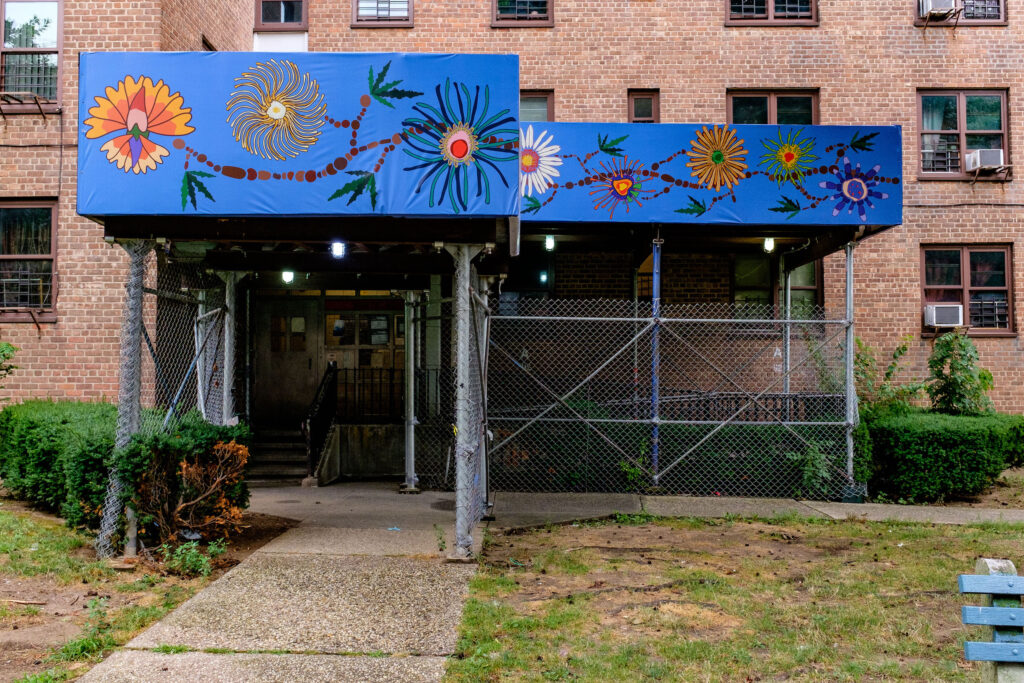
Kiki Bencosme, Dimelo Cantando, previously located at 70-30 Parsons Boulevard & 154-05 71st Avenue, Pomonok Houses, Queens. Photo by Paul Katcher.
The title of her piece, Dimelo Cantando, which translates to “tell it to me singing” was inspired by her Dominican roots. It is a common greeting phrase of endearment that Bencosme would often hear elders use while growing up.
“It was important for me to have that title in Spanish to kind of be like, this is representing us, you know, we are not living with everybody else,” said Bencosme. “We are here every single day fighting adversity.”
Close to 90 percent of NYCHA’s 400,000 residents are Black or Hispanic, according to city data. And communities of color in NYC were disproportionately impacted by the pandemic.
Bencosme’s mural, printed and laid over scaffolding, contains an array of florals against a blue background which she designed on Adobe Illustrator. Several of the flowers were lifted from art that children who attended her workshop created.
The mural was taken down this past March, after being up in the Pomonok Houses since July, 2022. She said that installation was a pivotal moment for her as she recounted childhood memories just blocks away from her installation. And although she never resided in NYCHA housing, she would often visit close friends and family who did.
“My inner child was just radiating,” said Bencosme when she first saw her work installed in person. “And I was able to connect with kids growing up in the area who grew up like me. So it was just a full circle moment.”
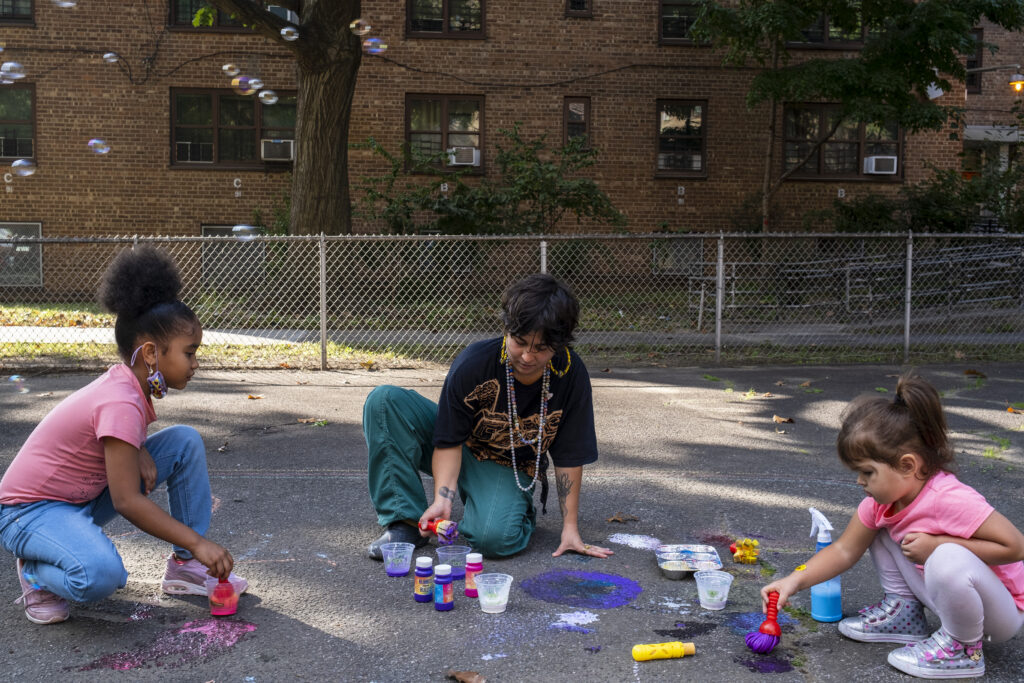
Kiki Bencosme leading an art workshop with children living in the Pomonok Houses. Photo by Destiny Mata.
She says that it was bittersweet when the piece came down.
Tipu Alam, another resident artist, installed an layered mural at the Astoria Houses last July. His work, which is still standing, features children photographed during his community workshop holding up letters that spell out Astoria with neighborhood spots collaged in the background.
Another side of the scaffolding shows the children photographed wearing various masks, and standing alongside themselves with their mask in hand. He says that the inspiration for the masks came during the Halloween season, when he led the workshop, as well as cultures around the world that hold masks to a high regard.
“It was amazing actually,” said Alam about the reaction that the children had when they saw themselves in his mural. “They were very happy.”
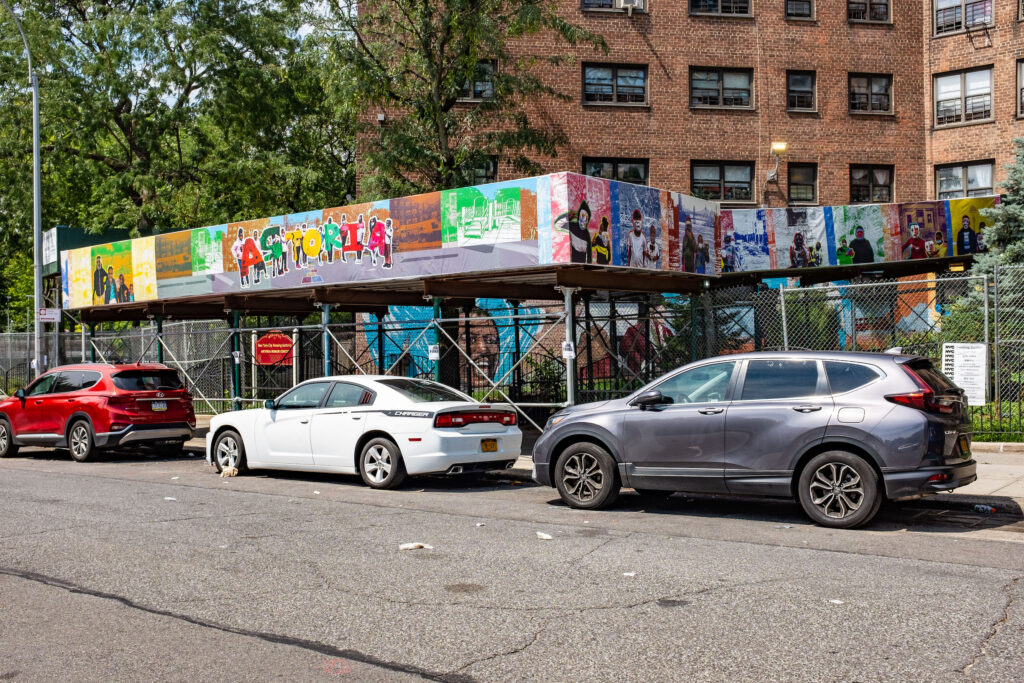
Tipu Alam, The Astoria Project, located at 4-03 Astoria Boulevard, Astoria Houses, Queens. Photo by Paul Katcher.
Alam, an immigrant from Bangladesh, chose Astoria as his site after living in the neighborhood for four years and having his work displayed in a local art gallery for two years. He is no stranger to the art of mural painting and has dotted various restaurants across Queens and The Bronx with their own extensive murals.
Both artists say that the program was also a big financial help during the pandemic, and believe that they were fairly compensated for their work. They pointed out that fair compensation is rare in their line of work.
“Everybody walked away, just feeling appreciated as an artist,” said Bencosme. “But also fulfilled that they were able to give back to their own communities.”



